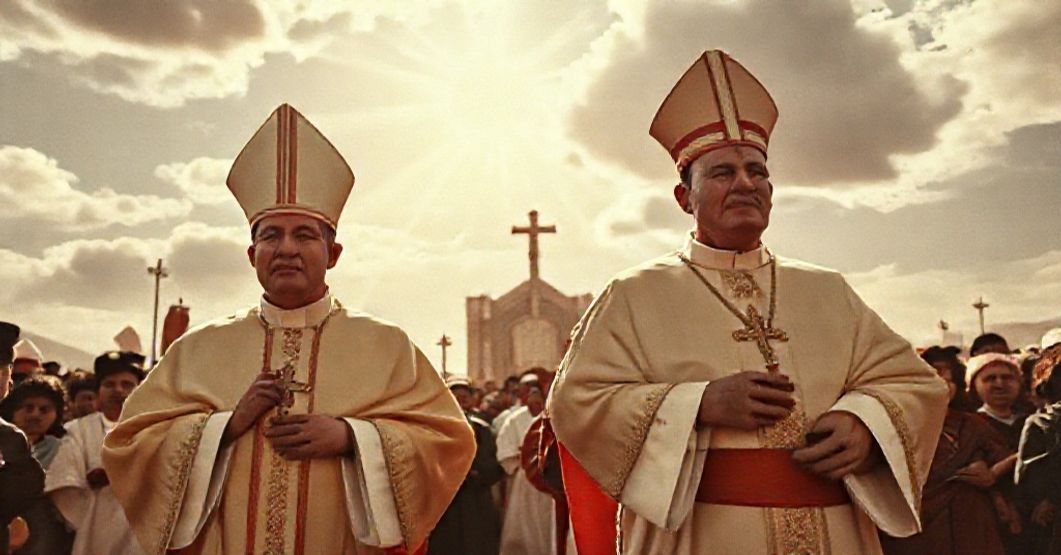Antipopes of the Antichurch



















Timeline of this heretical pontiff
Encyclical Letters
+ 15 posts1959
+ 7 posts1961
+ 4 posts1962
+ 2 posts1963
+ 2 postsApostolic Exhortations
+ 3 postsApostolic Constitutions
+ 93 posts1958
+ 6 posts1959
+ 87 postsMotu Proprio
+ 15 posts1958
+ 1 posts1959
+ 1 posts1962
+ 11 postsApostolic Letters
+ 151 posts1958
+ 4 posts1959
+ 63 posts1960
+ 78 posts1961
+ 1 posts1962
+ 4 posts1963
+ 1 postsSpeeches
+ 99 posts1958
+ 2 posts1959
+ 26 posts1960
+ 29 posts1961
+ 16 posts1962
+ 24 postsMessages
+ 6 posts1959
+ 4 postsHomilies
+ 4 postsLetters
+ 152 posts1958
+ 1 posts1959
+ 48 posts1960
+ 32 posts1961
+ 31 posts1962
+ 30 posts1963
+ 10 postsNot categorized
+ 1 posts1958
+ 1 postsNews feed


Hoc anno (1961.07.20)
This Latin letter, issued by antipope John XXIII on July 20, 1961, commemorates the fifth centenary of the canonization of St. Catherine of Siena, addressing Michael Browne as Master General of the Order of Preachers. It rehearses Catherine’s virtues and historical role: her defense of the Roman Pontiff, efforts for the Pope’s return from Avignon, interventions for peace in Italy, love of the Most Holy Eucharist, devotion to the Passion and the Precious Blood, and spiritual influence through her letters and Dialogue. It notes how later pontiffs assigned her patronages (of Rome, of Italy, of women in Catholic Action, of certain congregations) and exhorts the Dominican family and the faithful to celebrate the jubilee in her honor. The text cloaks a grave fraud: the usurper of 1961 parasitically invokes a true medieval saint to confer borrowed legitimacy on the conciliar revolution he is engineering against the very Faith she served unto death.


Laetum allatum (1961.07.04)
Dated 4 July 1961, this Latin letter of John XXIII appoints Richard James Cushing as papal legate to the National Eucharistic Congress in Santa Cruz de la Sierra, Bolivia. It praises Bishop Aloisio Rodríguez Pardo, extols Bolivian Eucharistic devotion, entrusts Cushing with representing the “pope,” proposes the motto “Omnes unum sumus in Christo” (We are all one in Christ), and links Eucharistic worship with unity, charity, social justice, and concern for the poor and indigenous. It culminates in an Apostolic Blessing as an encouragement to Eucharistic piety and fraternal concord.


Nostra Patris (1961.06.29)
The document “Nostra Patris” (29 June 1961), issued by antipope John XXIII to Martin John O’Connor as head of the Pontifical Commission for Cinema, Radio and Television, commemorates 25 years since Pius XI’s “Vigilanti cura.” It praises the potential of cinema, warns (moderately) against its moral dangers, commends episcopal and lay initiatives for classification and oversight, and urges Catholics to shape film culture through criticism, education, and cooperation with ecclesiastical “authorities” and experts.


A A A ES – La Ioannes XXIII’s Cult of Humanist Prestige (1961.06.15)
In this Latin letter dated June 15, 1961, antipope John XXIII congratulates Eugène Tisserant on the fiftieth anniversary of his elevation to the red hat by Pius XI, lauding his erudition, his work as Prefect of the Apostolic Library, his role in the Eastern Churches’ dicastery, and his admission to the Académie Française. The whole text is a polished homage to human learning, diplomatic service, and institutional prestige, culminating in a generic blessing.
Varia
Announcement:
– News feed –implemented
– Antipopes separate web sites with their all documents refutation – in progress
